What Makes a Deadbolt Lock Secure?
by Robert Fox
According to Department of Justice statistics, around 35% of home break-ins are committed by burglars who come right through the front door. A certain percentage would’ve been through front doors that are not locked, but most are due to inadequate door locks.
When it comes to front door locks, quality matters for both security and aesthetics. The last thing you want is to have a beautifully designed lock that is anything but secure.
Contents
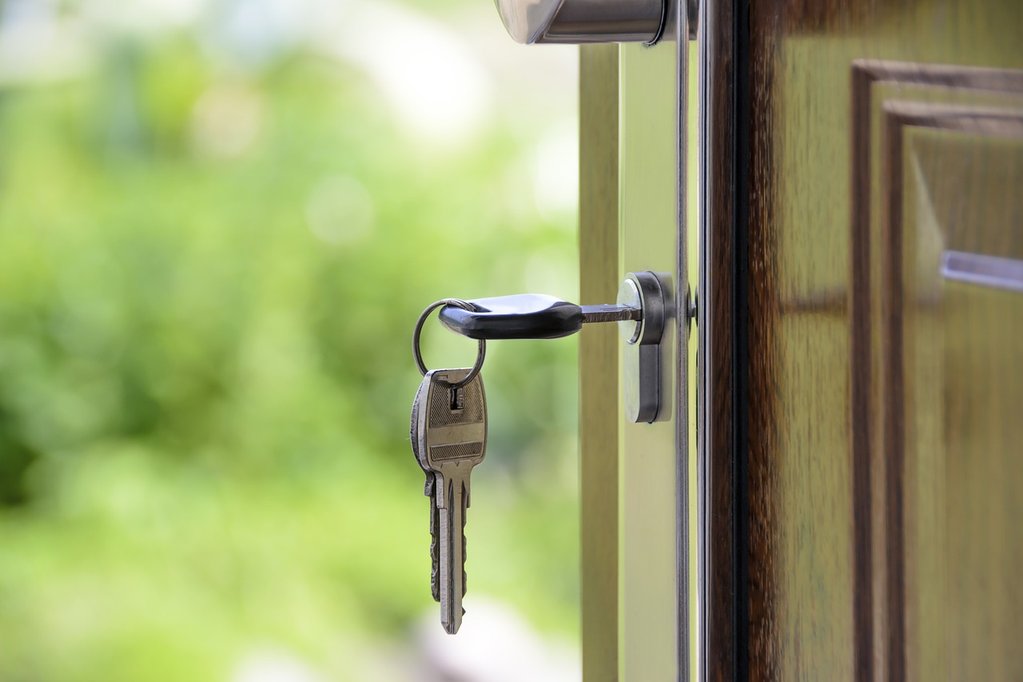
You need to find a lock you can trust to keep your precious belongings and beloved ones safe and secure at all times. Of course, a big plus is if it can enhance the curb appeal of your home as well.
Unfortunately, choosing the right lock can sometimes be confusing and time-consuming, especially if you are not sure what to look for.
That’s why we’ve come up with this guide where we discuss all you need to know when it comes to choosing the most secure and stylish lock for your home.
Here is what we are going to cover today:
- What makes a lock secure?
- BHMA and ANSI grading system
- Large bolt with spinning pin
- Longer screws
- Low profile
- Anti-pry plate
- Single vs Double Cylinder deadbolts
We should note that what we are going to talk about today applies more to mechanical deadbolts than it does to electronic deadbolts.
Mechanical deadbolts are the standard we look to when it comes to deadbolt locks that have been evolving for centuries, but when it comes to electronic deadbolts the information below sometimes won’t necessarily apply, as certain electronic deadbolts may have a different design aesthetic altogether, lacking one or more of the security characteristics we will mention.
Read our article “What is a deadbolt and how does it work?” to get some basic info on how deadbolts work if you aren’t sure about the basics of deadbolt functionality to begin with.
Let’s get to it!
BHMA and ANSI Grading System
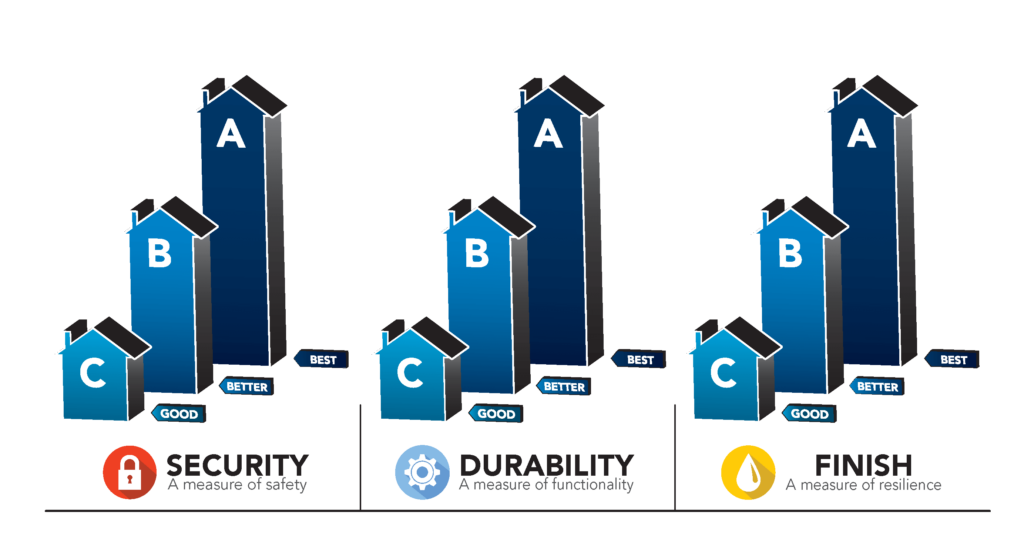
BHMA grading system is used to grade residential door lock performance in the categories of Security, Durability, and Finish.
A grade of “C” is good, “B” is better, and “A” is best. This means a grade of AAA is the best grade possible in all three categories.
Here is more info on BHMA grading from the Schlage website
Another way of grading locks is through the ANSI grading system. ANSI grading system factors in longevity of the lock, toughness, and latch length.
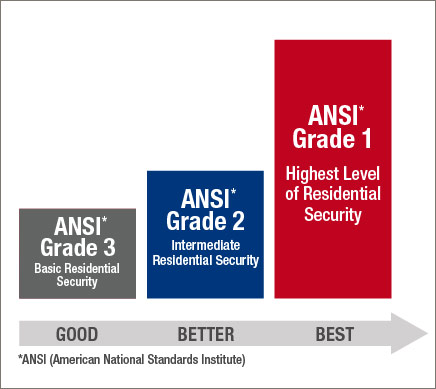
Locks can have ANSI grades between 1 and 3.
Grade 1 locks offer the highest level of security and are often used for commercial purposes. These locks are also known as heavy duty locks. They can withstand 10 strikes of 75 pounds of force.
Grade 2 locks are not as strong as Grade 1, but they still offer great protection.
Grade 3 locks meet the basic residential requirements and are usually used as a secondary security measure on a door. They are designed to withstand 2 strikes of 75 pounds of force.
Here is more info on ANSI grading from Weiser Lock
Moving on…
Large Bolt with Spinning Pin
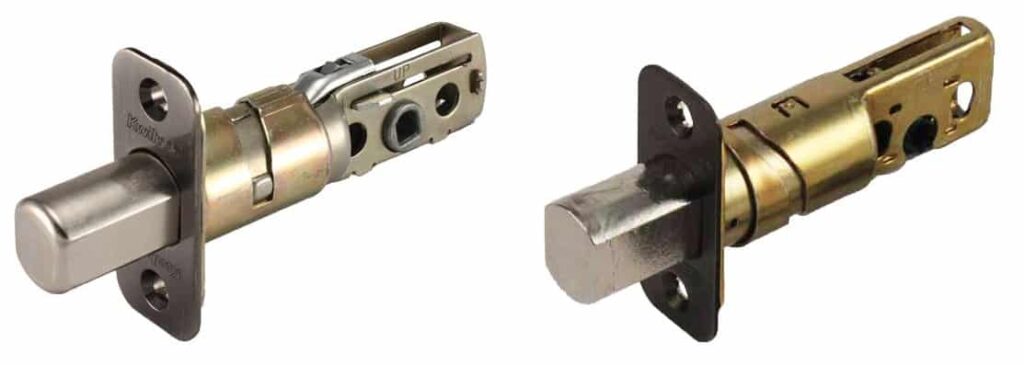
Larger bolts make a huge difference in security as it takes incredible amount of force to disable them. Nowadays, most heavy duty locks come with a solid 1 inch bolt for better kick-in resistance.
Some lock manufacturers such as Schlage and Medeco also equip their bolts with a hardened steel pin inside that spins in response to sawing attacks, so they can’t be cut through.
Because a larger, sturdier bolt requires a larger bore hole than a standard bolt, you may have to pay your local locksmith to widen the bore hole, but the added layer of security is well worth it
Next, we discuss the importance of the length of the screws.
Longer Screws
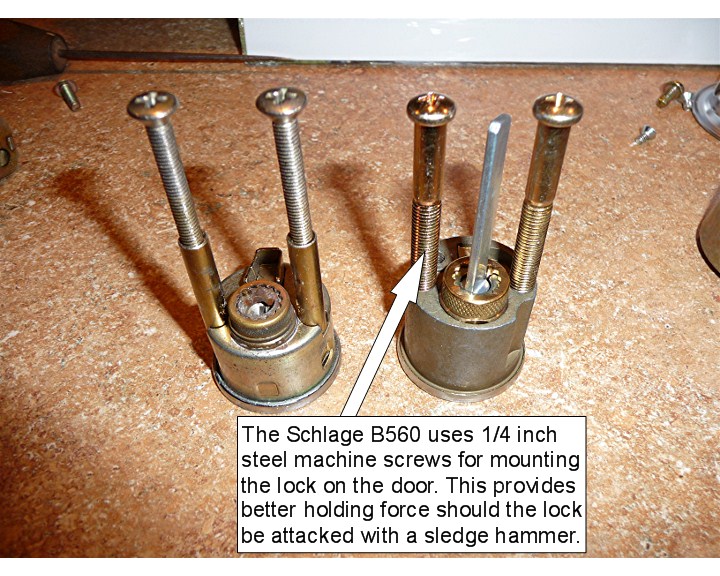
The length of the screws and the toughness of the strike plate can make your entryway much more secure. Most standard strike plates come with screws that screw only into the doorjamb. These types of screws unfortunately can’t secure your entryway from a doorjamb attack.
Heavy duty locks usually come with tough security strike plates and 3 inch or longer screws that are long enough to fasten the strike plate directly into the stud located behind the jamb.
Moving on…
Low Profile
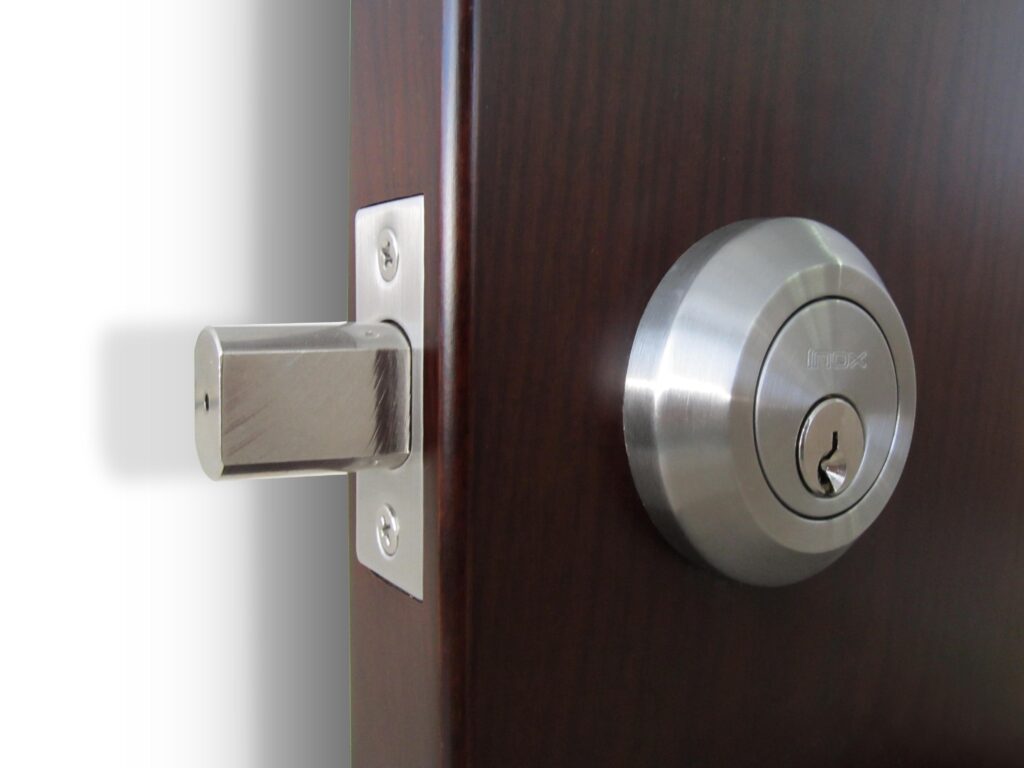
A low-profile face on your deadbolt makes it almost impossible to grab with a wrench or pull off. Not to mention that concealed screws and low-profile trim can also enhance the curb appeal of your home.
An example of a deadbolt with a low-profile face would be Medeco Maxum bump and pick prof lock we’ve reviewed.
Next, we discuss about anti-pry plates AKA latch shields…
Anti-pry Plate
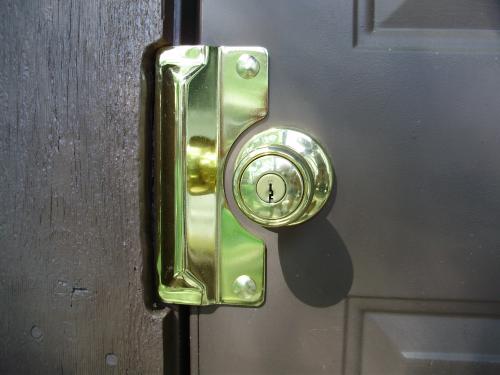
Anti-pry plate (AKA Latch Shield or Latch Guard) is a piece of metal used to cover the space between the edge of the door and the door frame. It is designed to prevent burglars from using objects such as hammer or crowbar to pry the door open.
Some anti-pry plates only cover the area where the door latch is and others cover the entire length of the door.
While pry-plates can be purchased independently, most manufacturers include them with their heavy-duty locks.
Finally, we discuss the differences between single and double cylinder deadbolts…
Single vs Double Cylinder Deadbolts
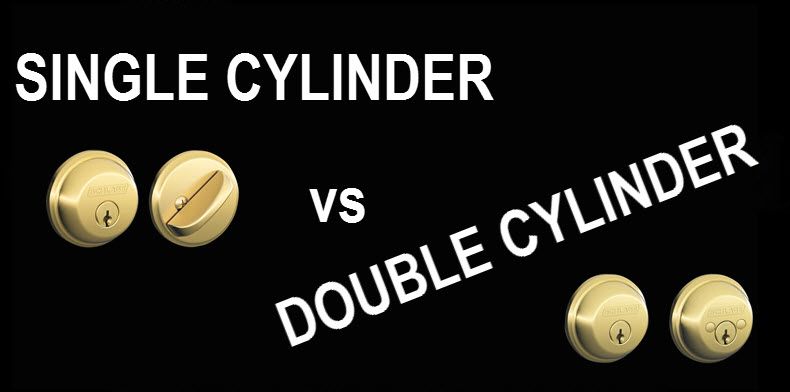
Single cylinder deadbolts are operated with a key from the outside, but don’t require a key for locking or unlocking from the inside. Instead, the door is locked or unlocked using a thumb-turn lever.
Single cylinder deadbolts cost less to purchase and install than double cylinders. They are also more convenient to use as there is no need for a key to operate from the inside.
Double cylinder deadbolts require a key for locking and unlocking from both the outside and the inside of the property. The major benefit of double cylinder deadbolts is that they are designed to provide enhanced level of security.
A single-cylinder deadbolt can be easily breached if an entry door has glass panels, because a burglar can break the glass and reach inside to unlock the deadbolt. A double-cylinder deadbolt protects against this.
However, the double-cylinder deadbolt can be problematic in the event of an emergency such as house fire because a key is required to unlock the door from the inside.
Please check the local laws before you decide to install a double cylinder deadbolt to your front door. That’s because double cylinder deadbolts are prohibited in some areas due to fire-code restrictions.
Thanks for reading our guide to what makes a deadbolt lock secure! If you have any more questions or comments, please leave them below.
Here are 3 more articles from our website that you might benefit from reading:
Best Heavy Duty Deadbolt Locks – Review
Best Mechanical Deadbolts – Review
Related posts:
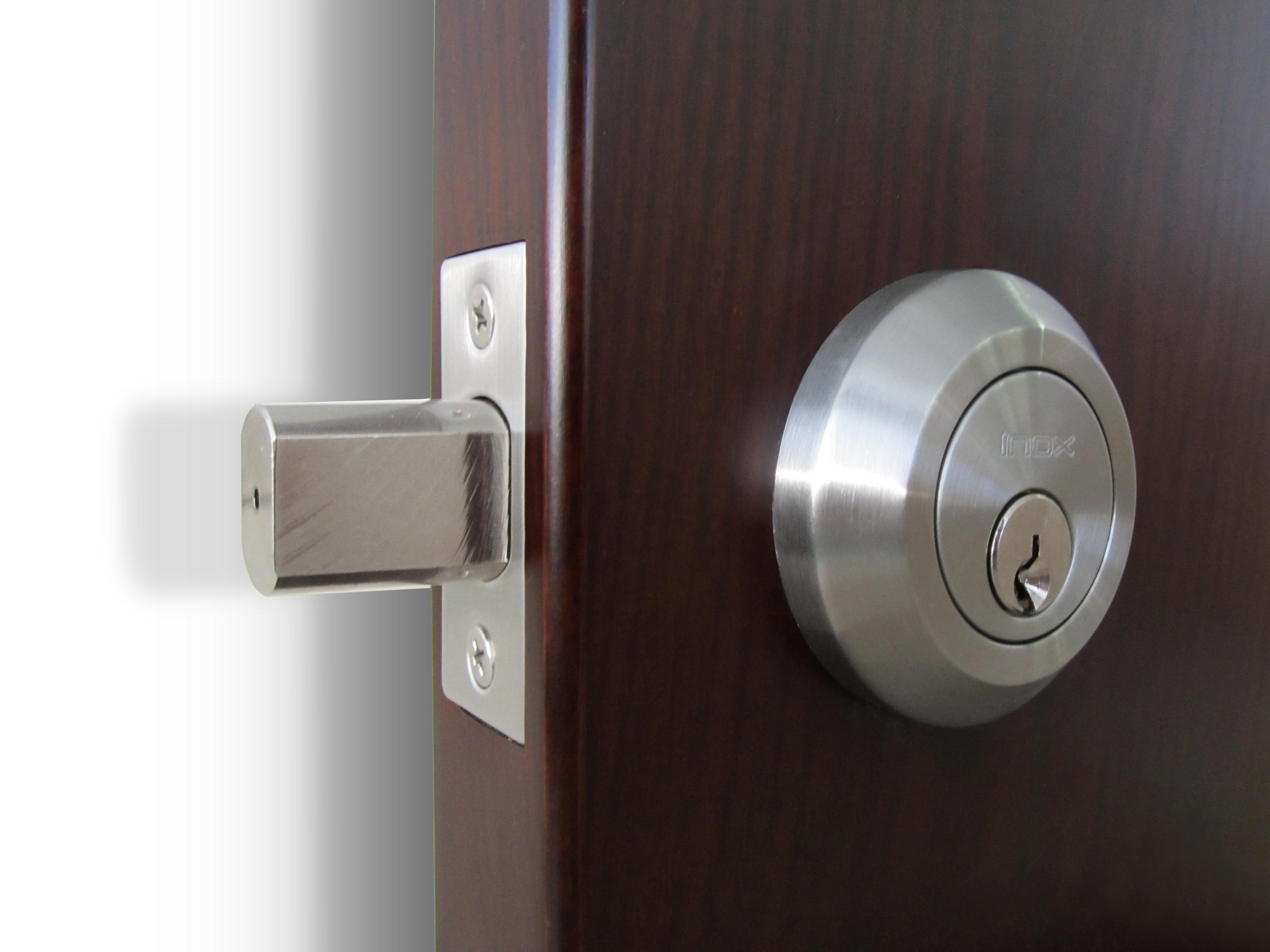
- What Is An RFID Lock System and How Does It Work?
- Best Pocket Door Locks - Hardware By Schlage, Kwikset, And More
- Schlage Vs Weiser Locks
 |
 |
 |
 |

About Robert Fox
Rob Fox is a former hydro worker who used to teach self defence in Miami for 10 years. He's currently enjoying his retirement, playing cribbage and golf with his buddies, locksmithing and home security in his spare time. Rob is an avid reader, and has even written a few books on the subject of self defence.
Thoughts on "What Makes a Deadbolt Lock Secure?"
 |
 |
 |
 |
Check These Out
You can Get FREE Gifts. Furthermore, Free Items here. Disable Ad Blocker to receive them all.
Once done, hit anything below
 |
 |
 |
 |